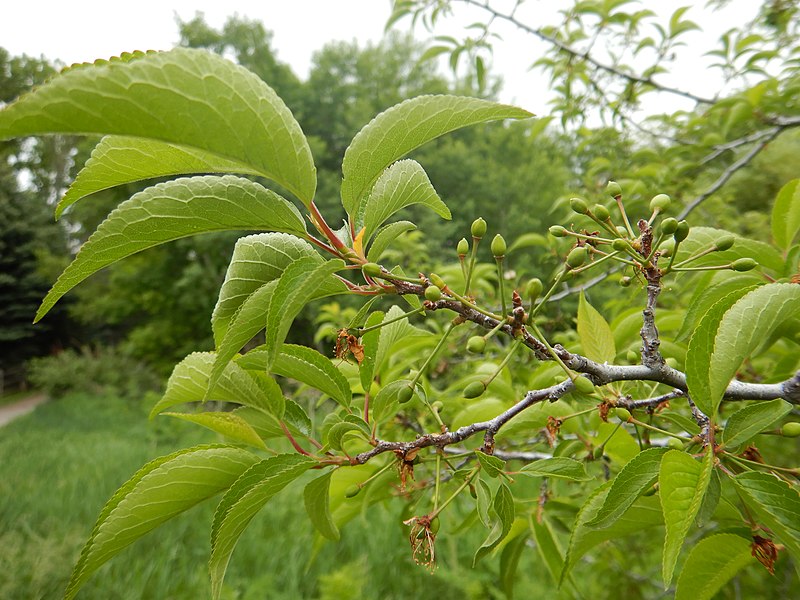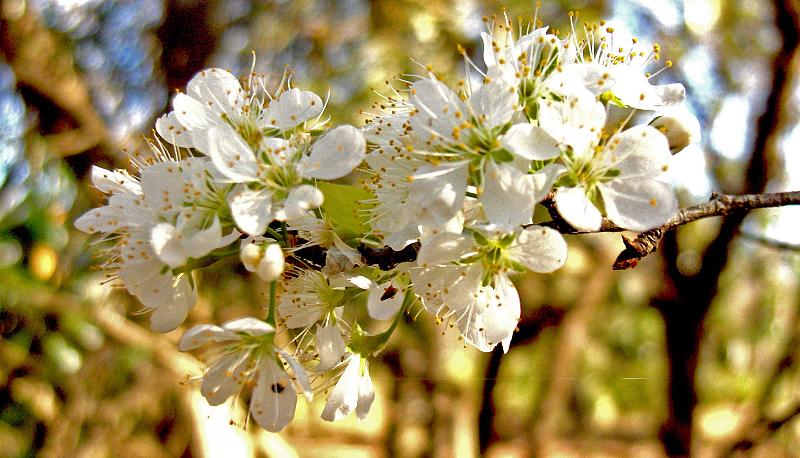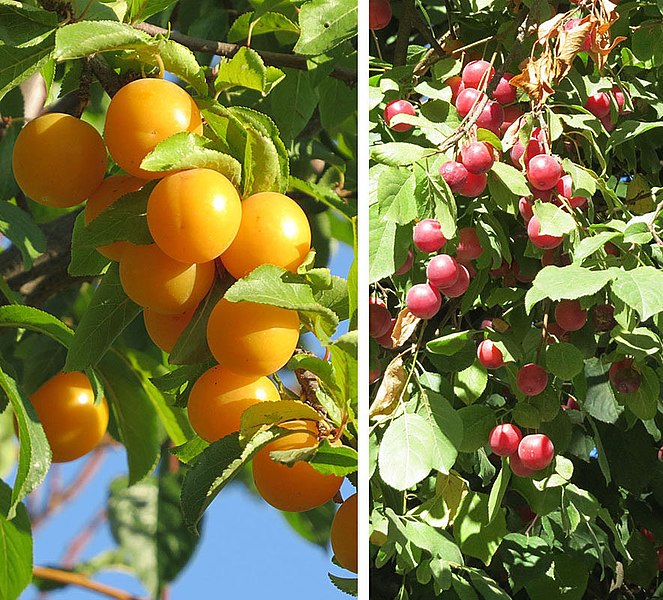American Plum Identification – Prunus americana
Heads up
If you’ve ever had the pleasure of wandering through fields, along the edges of forests, or even on roadsides, you might have come across the American Plum, known scientifically as Prunus americana. The American Plum belongs to the Rosaceae family. This means the American Plum is a relative of the roses . This plant is also known as the American Red Plum, hinting at its colored fruit.
American Plum: Key Parts in Photos




Where to find it
This tree loves sunlight but can tolerate a bit of shade. It grows in places like fields, prairies, woodlands, and the edges of forests. If you’ve ever driven past roadsides or walked along shores, you might have seen it there too.
How to identify American Plum
The American Plum isn’t a giant. It grows to be between 10 to 25 feet tall. When you look for it, try finding it around May, as that’s when it blooms.
Before the tree is covered in leaves, it brings forth its flowers. You’ll find numerous clusters at the tips of the branches. Each cluster can have one to four flowers. The clusters look a bit globe-shaped. Each flower is about an inch across. They have five white petals, which can be round or shaped a bit like an egg. Inside, there’s a slender style, surrounded by long, yellow stamens. The flowers also have green to red sepals. They’re about a third of the petal’s size and can either stick out or bend downwards.
The leaves of the American Plum are quite distinct. They are simple and grow alternately on a stem. They’re up to 4 inches long. The leaves are pointy at the end and attach to a tiny, hairy stem. The top part of the leaf is dark green and usually smooth, while the bottom is a bit lighter and somewhat hairy. The edges of the leaves are with sharp teeth.
You can also tell a lot about the tree from its twigs and bark. The twigs are brownish-red to gray. The branches of the tree spread out widely. Sometimes, older branches become very thick and pointy. The bark of an older American Plum tree is dark gray and has ridges and hard strips that curl up.
After the flowers, come the fruits. The American Plum produces fruit that is a purplish-red color. The fruit has a thin layer on top that looks waxy. It’s roughly an inch in size and hides a hard seed inside. In the world of botany, such fruits are called ‘drupe’. Think of peaches or cherries – they have a similar structure with a fleshy part outside and a hard seed inside.
